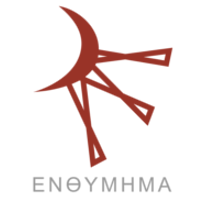Suspense is the Key. Narratology, Cognitive Neurosciences and Computer Technology
DOI:
https://doi.org/10.13130/2037-2426/6484Abstract
The Narratology of new generation shows renewed heuristic scenarios, providing an intense dialogue among Humanities, Cognitive Neuroscience and Computer Technology. The suspense case is emblematic: its spread and the pleasure exercised by this rhetorical strategy on the human mind can be precisely explained by identifying the mechanisms of reward provided by neurological and Imaging studies. At the same time, patterns of automatic generation of narrative highlight the profound implications of a heated debate between Narratology and Computer Technology, in order to understand the processes of reception and inference during the narrative immersion in storyworlds. At the end of overview on of a cross-disciplinary approach of suspense analysis, the authors repost a case study considered of interest, provided by the North Caroline State University researchers group, called Liquid Narrative Group.Riferimenti bibliografici
Bae, Byung-Chu., Young, R. Michael. “A Use of Flashback and Foreshadowing for Surprise Arousal in Narrative using a Plan-based Approach”. Proceeding of the Inter-national Conference on Interactive Digital Storytelling (ICIDS08), 2008, Erfurt Ger-many, 156-167. Stampa.
Bazin, André. Che cos’è il cinema. Milano: Garzanti, 1967. Stampa.
Calabrese, Stefano. Neuronarratologia. Bologna: Archetipolibri, 2009. Stampa.
Fitch, W. Tecumseh, Von Graevenitz, Antje von, Nicolas, Eric. Bio-Aesthetic, dina-mics and Aesthetic Trajectory: A Cognitive and Cultural Perspective. In Martin Snov & Oshin Varatarian (Ed.), Neuroaesthetic. Amitylle, N.Y.: Baywood Publishing Company, 2009, 59-102. Stampa.
Fludernik, Monika. An Introduction to Narratology. London/New York: Routledge, 2009. Stampa.
Hassan, Uri A., Yang, Eunice, Vallines, Ignatio, Heeger David J., Rubin, Nava. “A Hierarchy of Temporal Receptive Windows in Human Cortex”. Journal of Neuro-science, 28(10), 2008, 2539-2550. Stampa.
Koelsch, Stephan, et al. “The roles of superficial amygdala and auditory cortex in music-evoked fear and joy”. Neuroimage, 81, 2013, 49-60. Web.
Koelsch, Stephan. Brain and Music. West Sussex UK: John Wiley & Sons, 2012. Stampa.
Jacobs, Arthur M. (2013). “Neurocognitive Models of Literary Reading”. Retrieved October 13, 2001, from https://www.researchgate.net/publication/235952745_Neurocognitive_Model_of_Litera. Web.
Jin, Hua, Liu Ho-Ling, Mo, Lei, Fang, Shin-Yi, Zhang XJohn, Lin, Chong –De.“Involvement of the left inferior frontal gyrus in predictive inference making”. International Journal of Psychophysiology, 71, (3) 2009, 142-148. Stampa.
Lehne, M., & Koelsch, S. M. (2014). Tension Resolution Patterns as a Key Element of Aesthetic Experience: Psychological principles and underlying brain mechanism. In J. P. Huston (Ed.), Art, Aesthetic and the Brain (pp. 122-138). New York: Oxford University Press.
Macrì, Sara, Capogrossi Colognesi, Simone. Che cos’è lo stress. Roma: Carocci. 2001. Stampa.
Oatley, Keith. “A Taxonomy of the Emotions of the Literary Response and a Theory of Identification in Fictional Narrative”. Poetics, 9 (23) 1994, 53-74. Stampa.
Rabkin, E. S. Narrative Suspense. “When Slim Turned Sideways”. New York: Ann Arbor. 1963. Stampa.
Pérez, Xavier. La suspense cinematografica. Roma: Editori Riuniti. 2001. Stampa.
Rizzolatti, Giacomo, Fogazzi, Leonardo, Gallese, Vittorio. “Neurophysiological Me-chanism Underlaying the Understanding and Imitation of Action”. Nature Review Neuroscience, 2 (2001), 661-669. Web.
Todorov, Tvetan. Structural Analysis of Narrative. In Vincent B. Leich. The Norton Anthology of Theory and Criticism. New York/London, 2001, pp. 2099-2016. Stam-pa.
Zunshine, Lisa. “Theory of Mind as a Pedagogical Tool.” Interdisciplinary Literary Studies. 16.1, 2014, 89-105. Stampa.
Dowloads
Pubblicato
Come citare
Fascicolo
Sezione
Licenza

Except where otherwise noted, the content of this site is licensed under a Creative Commons Attribution 4.0 Unported License.
Accettato 2016-01-04
Pubblicato 2016-01-09





